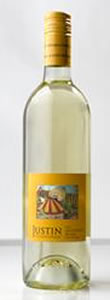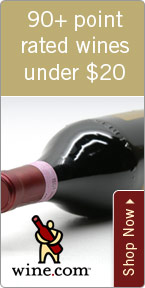So Sad When Good Corks Go Bad

Wednesday - August 24, 2011
| Share
 Del.icio.us
Del.icio.us
|
I didn’t invent the term, but I think “cork dork” is a pretty good name for those of us who are passionate about wine.
Cork has a long history with wine and has its own secret life. Corks are so important to the world of wine and yet quite the fragile link.
Cork is made from the bark of a tree. It actually comes from a type of oak tree, quercus suber.
Interesting, isn’t it, how the oak tree also makes the barrels in which wine is raised? Once the tree is old enough, the bark is stripped from the tree. This does sound rather ruthless, but the bark of the tree is actually renewable and the oak tree is never felled unless it is diseased. In fact, in Portugal it is illegal to cut down a “cork tree,” and there must be legal permission to do so. The largest forests of cork trees are in Portugal, but they also thrive in Spain, Algeria, Morocco, France and Italy.
At the time of harvest the bark looks like thick curved sheets of, um, well, bark. They are cleaned and dried, then graded according to thickness and quality. They are then sent to the mill where the outside layer of dead wood is sanded down to the “meat” of the bark which makes up the cork. This clean “sheet” is then put through a machine that literally punches out the corks according to size. The individual corks are then cleaned again and often bleached with a chlorine solution cleaning agent. Here is where a cork can turn bad.
If the cork has a mold in it that reacts with the chlorine cleaning agent, the result is a taint of the cork(s) that can permeate a wine when it comes in contact with it. This is called a corked wine. The correct term for this taint is “2, 4, 6 trichloanysole,” and it smells like wet cardboard and even a wet stinky dog.

|
Obviously, winemakers must choose their corks wisely. Quality factors they look for are age and density. Typically, the older the bark, the higher the density and longevity of the resultant cork. This is extremely important for wines that are meant to be cellared for many years. I know one winemaker who chooses only Sardinian corks made from a minimum of 50year-old bark. He says they are the most expensive around, but also the best.
Cork hermitically seals the bottle but also absorbs a small amount in order for the cells to remain rigid. This is why bottles are stored on their side. A cork can dry out and lose its size, allowing oxygen into the bottle and wine out. Corks can last upward of 50 years, but they do degrade.
If you see the corks on ancient bottles, they are quite deteriorated and can break once pierced by a wine key, so be careful when opening. There are some tools that can help. The “ah so” cork puller is good, and the hand-cranking French screwpull works well, too. But make sure to have a decanter and filter handy. This cork dork doesn’t want any in your glass.
Recommendations: 2010 Justin Vineyards Sauvignon Blanc ($15) Notes of passion fruit, grapefruit and lime come zinging out of the glass. Light and refreshing. I had to ask myself, “Why wouldn’t I drink this?” NV Henriot Brut Blanc de Blanc ($65) Made from Grand Cru vineyards, this has a deeply penetrating nose of nuts and fruit with all the class and elegance that Grand Cru can have. It’s never too early to think about the holidays!
Roberto Viernes is a master sommelier. E-mail .(JavaScript must be enabled to view this email address)
E-mail this story | Print this page | Comments (0) | Archive | RSS Comments (0) |
Most Recent Comment(s):












